Striped Raphael catfish (lat. Platydoras armatulus) is a popular freshwater tank fish of the family Doradidae. The fish have armor, they are enduring and can produce various sounds – all these features attract aquarists. But there some peculiarities in keeping catfish and you’ll find out about them from our article.
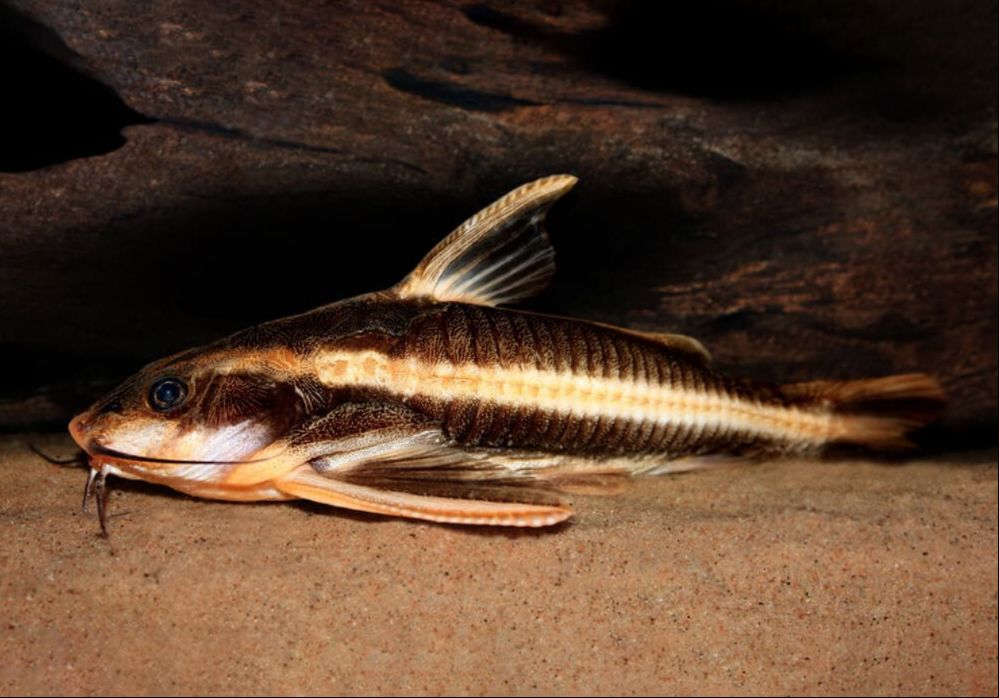
Contents
Habitat in the wild
The Striped Raphael Catfish belongs to the family Doradidae. Doradidae is a family of catfish commonly known as “thorny catfish” or “talking catfish.” These catfish are primarily found in South America and are known for their unique appearance, with bony plates and sometimes spines covering their bodies.
The name of the kind — «Platydoras» origins from two Greek words: platys = wide, doras = skin, armor. This kind was called Platydoras costatus by mistake until the time when in 2008 a group of scientists classified and divided two similar kinds: Platydoras costatus and Platydoras armatulus.
Species with a restricted habitat that includes couple of rivers in the Eastern part of South America are called Platydoras costatus. As for Platydoras armatulus, it is spread over the whole territory of South America and it dwells in basins of Amazon and Orinoco rivers.
The striped Raphael catfish has huge natural habitat, that includes Orinoco river basin in Colombia and Venezuela, Essequibo River in Guyana, part of Amazon river basin in Peru, Bolivia and Brazil, Tocantins River and Parnaíba River basins.
Platydoras armatulus dwells in slow and lantic waters, including tributaries, streams and bogs. Usually, the fish finds its shelter among drowned roots or submergent vegetation.
The catfish feeds on mussels, crustaceans and detritus. Usually they are encountered in areas with soft sand in which they bury themselves if they feel danger. Rain season makes the fish migrate to flooded forests where there is a lot of food. Though the fish is a territory dependent one, in the wild they form schools to feel more safe.
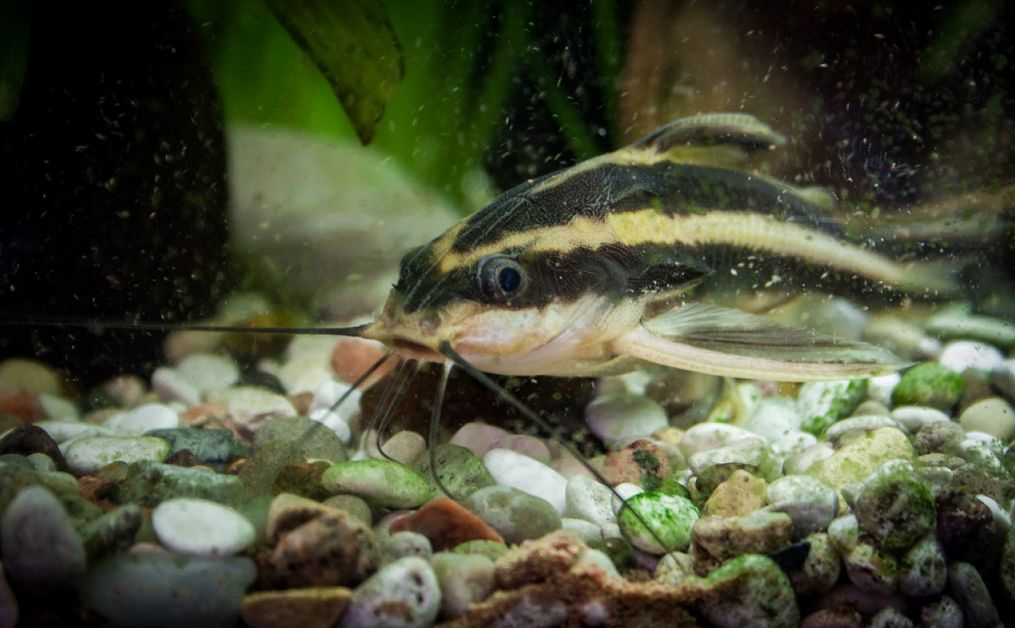
Description
Size
In the wild striped Raphael catfish grows to be up to 20 centimeters (7.9 in) long and sometimes even bigger species can be encountered. In a tank the average length of the adult is 15 cm (6 in).
Lifespan
Lifespan is 15 years, some records state that it can be even 20.
Body
The striped Raphael catfish has cylindrical arrow shaped body with flattened abdomen and a large head. The eyes are large and laterally-spaced. Its bony outgrowths form sharp curved spines along its lateral line.
The dorsal and pectoral fins are notched. The front ray of the pectoral fin is covered with small spines and it has a sharp hook at its end.
Be careful when catching these catfish, since the spines on their body and fins may easily get stuck in a dip net. Its sharp pectoral spines may cause serious injury, if you prick yourself with them.
It is better to catch this catfish with the help of a jar or other container, since again the fish can get stuck in the net due to its sharp fin rays.
The striped Raphael catfish has 3 pairs of barbels. Two of them are located on its mandible: two central ones are 2—3 cm long and two along the edges 4—5 cm long. There is one pair of barbels up to 7-8 cm long on the fish maxilla.
Young species as a rule are colored brighter, than the older ones. The body coloring varies from dark brown to black with clear and solid light colored lateral stripe (its color varies from white to yellow).
A pair of these stripes join together into one line on the back in interorbital area. Bottom of the head and front edges of the pectoral fins are also white.
Striped Raphael catfish can produce various sounds due to this it is also called a «talking catfish». It makes these sounds to attract species of its kind or to scare off predators.
It makes these sounds in two various ways. The first one includes partial blocking of pectoral fins in their cavities and rubbing with its spines and this way making a buzz sound. The second one is made by quickly constricting and relaxing the muscle on side of which is located on the back of the scull and the other one is on the front side of its air bladder.
At that the latter starts resonating and makes a bit deeper and louder buzz sound. These sounds can be easily heard and sometimes even through the tank walls or when the fish is caught in a net.
| Characteristic | Description |
|---|---|
| Scientific Name | Platydoras armatulus |
| Common Name | Striped Raphael Catfish; chocolate doradid; chocolate catfish |
| Family | Doradidae |
| Origin | South America: Found in the Amazon River Basin and its tributaries |
| Size | Up to 8 inches (20 cm) in length |
| Appearance | – Striped pattern with a dark base color and light stripes |
| – Armored appearance with bony plates covering its body | |
| – Long, flowing whiskers (barbels) | |
| Behavior | – Nocturnal: Active during the night and hiding during the day |
| – Peaceful and relatively shy, tends to be a good community fish | |
| Tank Size | Preferably a large tank with ample hiding spots, at least 30 gallons (114 liters) or more |
| Water Parameters | – Temperature: 72°F to 79°F (22°C to 26°C) |
| – pH: 6.5 to 7.5 | |
| – Water hardness: Soft to moderately hard | |
| Diet | Omnivorous: Accepts a variety of foods including pellets, flakes, frozen, and live foods |
| Feeding Habits | Scavenges for leftover food and detritus at the bottom of the tank |
| Compatibility | Generally peaceful, but avoid keeping with aggressive tankmates |
| Maintenance | Regular water changes and monitoring water quality |
| Breeding | Difficult to breed in captivity, limited information available |
| Special Considerations | Be cautious of sharp spines while handling; use a net when necessary |
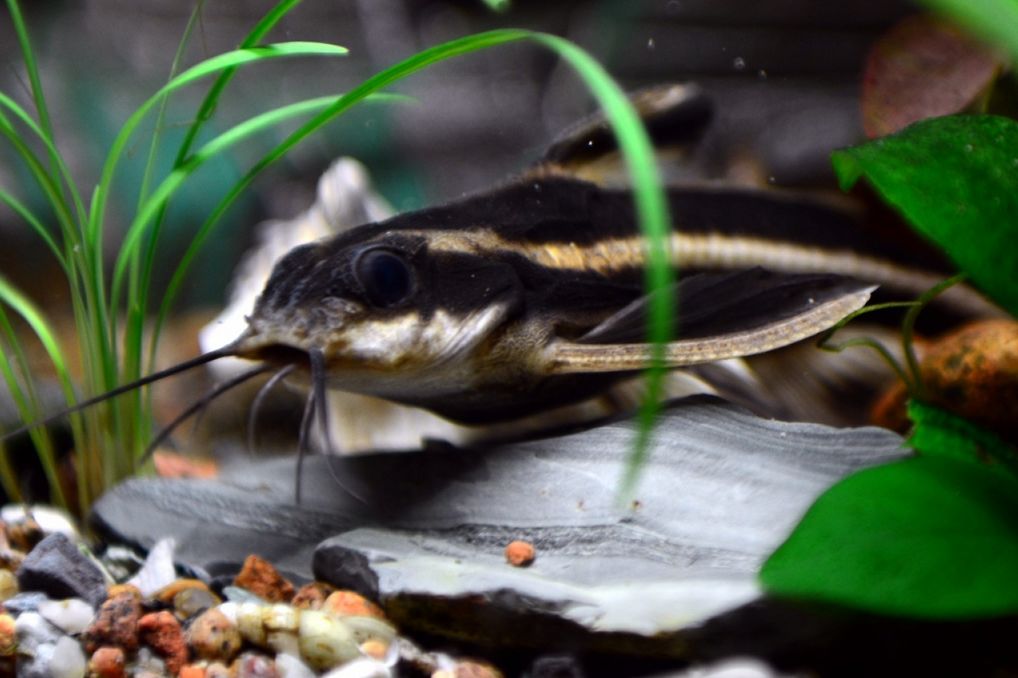
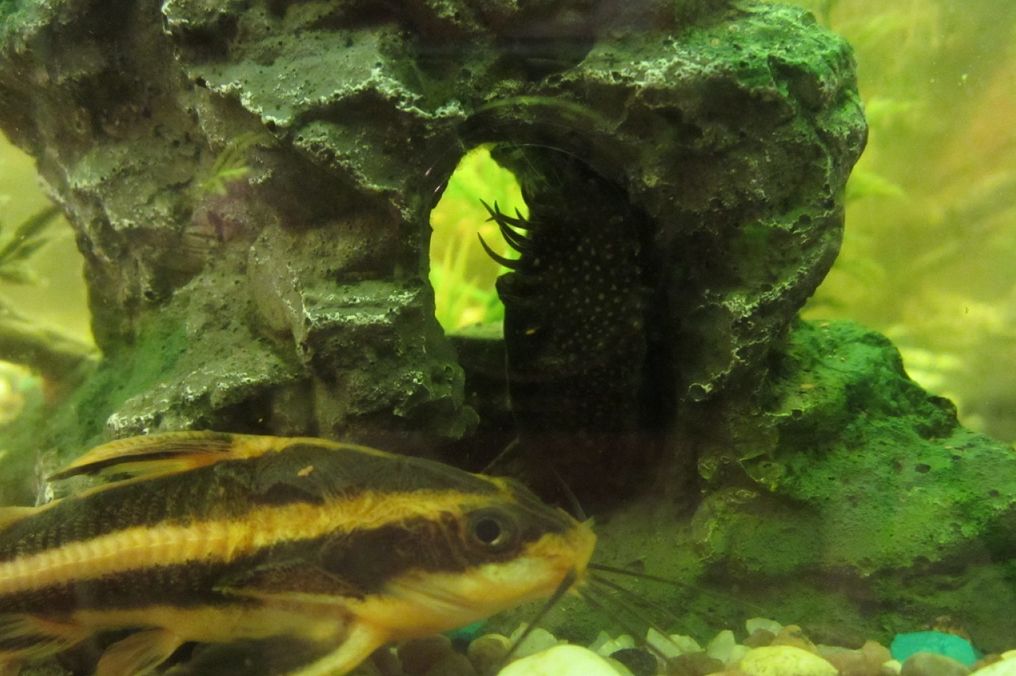
Difficulties in keeping
This renowned fish species is often considered as a perfect one for beginner aquarists. It is enduring and it can do with various range of tank conditions. However, its timid temper, the size of the adult fish and tendency to eat its smaller tank mates means that it is good only for tanks with large sized dwellers.
During the first year of the striped Raphael catfish life you can observe them whole day long. There are cases when striped Raphael catfish bobs up to the tank water surface and turns with its abdomen up – this way it gathers the food from the water surface.
As the fish grows older they become more reserved and demonstrate nocturnal habits by being more active only late at night. The fish feeds at night, correspondingly; in case if they don’t have enough food they start to eat smaller fishes in a tank.
Keeping in a tank
This catfish is not very active, but due to the size it’ll potentially grow you’ll need a tank from 150 liters (33 gallons) capacity. Raphael catfish easily stands quite severe environmental conditions. This is a nocturnal species, it is careful and timid during a day, that’s why it’s better to keep the tank obscure.
Despite the above mentioned, the striped Raphael catfish quite often leaves its shelter to study everything around it during the day. As a rule the fish becomes braver as it grows and adult species will often swim around the tank both when the lights are on and off.
This catfish likes burying itself into a soft river bottom, that’s why be ready to provide it with a place in a tank with sandy bottom and gravels. Use some dim lights and floating plants on the tank surface as well as make a lot of shelters – caves, flower pots, plastic tubes, snags and stones.
Plants are not necessary in the tank, but they will be helpful in terms of reducing the amount of light getting to the tank bottom and providing additional shelter to the fish.
The striped Raphael catfish is rather undemanding in terms of tank water parameters: water temperature should be 21–27 °C (70–81 °F), pH 6.5-8.0, 8 — 15 dGH.
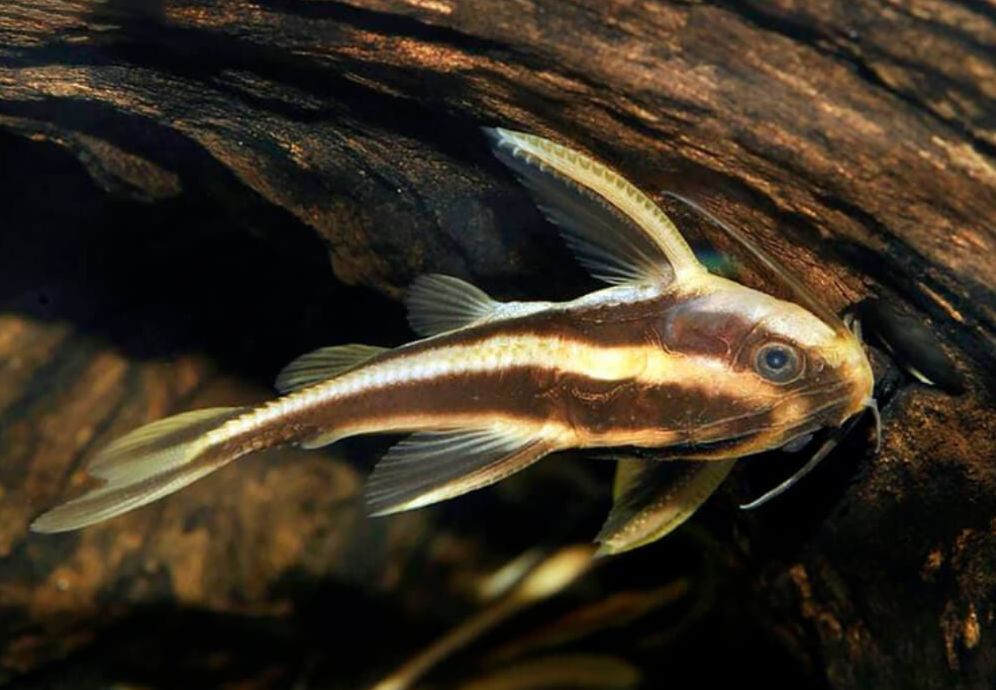
Diet
The striped Raphael catfish is omnivorous and it’s easy to feed it. In the wild they feed on mussels, crustaceans and detritus. The fish is a bottom feeder, so it means that it eats everything it can find on a river on a tank bottom.
In a tank the fish eats all kinds of food. Use high-quality pellets or tablets as main component of the diet. As for supplementary components, these may be live and frozen food such as bloodworm, small earth worms. It’s better to feed the fish when the lights are off to make sure that it’ll get the food and won’t stay hungry.
You should feed the fish every day, since striped Raphael catfish is a nocturnal fish, feed it after you turn off the tank lighting. This catfish is a gluttonous one, so be careful not to overfeed it. If you noticed that you pet has enlarged abdomen, just don’t feed it for a couple of days. As a rule such a manifestation doesn’t mean that the fish is ill, it was just overfed.
Tank mates
The striped Raphael catfish is absolutely not aggressive, but it may treat small fishes as food, that’s why they actually aren’t suitable for a community tank. They get along well with large fishes, but don’t keep them together with small sized tank mates, that they can eat (betta, guppies, platy). The fish will definitely eat them at night.
If you want to keep several species in a tank, you’ll need sufficient number of shelters for them, since otherwise they may start fighting with each other. Cichlids and other large sized fishes can be good tank mates.
Taking into account that the fish has its armor that protects it, you may even keep it with aggressive species such as flowerhorn, oscar fish, jaguar cichlid.
Gender differences: male vs female
Only when you have enough of experience of keeping the fish, you’ll be able to see between the male and female. Usually the striped Raphael catfish male is slimmer and brighter colored, than the female.
Breeding
Striped Raphael catfish is still bred only by means of hormonal injections. Though there is some information about getting juveniles in home aquaria, but this was by an accident and it is the exception rather than the rule.